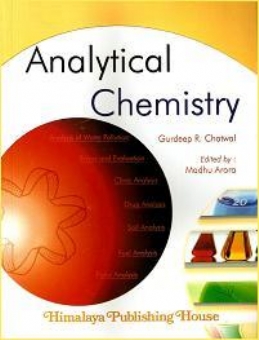The book entitled “University Chemistry” is a very sincere attempt to arouse the interest of the students in Physical Chemistry-I taking chemistry subject as their Honours paper in B.Sc. course. This book is written in easily understandable and catchy language so that the students can easily grasp the contents that they read. This book is intended as a theory book for students appearing for B.Sc. (Hons.).
The salient features of this book are –
* It is based on the prescribed syllabus for the B.Sc. courses of the state universities.
* It provides basics of theory.
* It gives concise and pointwise information of the subject matter.
* It includes solved problems in each chapter and different questions at the end of each chapter.
Contents –
PHYSICAL CHEMISTRY – I
Chapter-1: GASEOUS STATE
Kinetic molecular model of a gas: collision frequency; collision diameter; collision cross section, mean free path and viscosity of gases, including their temperature and pressure dependence, relation between mean free path and coefficient of viscosity, Maxwell distribution of molecular velocities (no derivation) Average, root, mean square and most probable velocities and average kinetic energy, law of equipartition of energy. Behaviour of real gases: Deviations from ideal gas behaviour, Causes of deviation from ideal behaviour. van der Waals equation and application, Compressibility factor Z and its variation with pressure for different gases, critical phenomenon and critical constant derivation
Chapter-2: LIQUID STATE
Qualitative treatment of the structure of the liquid state; physical properties of liquids; vapour pressure, surface tension and coefficient of viscosity, and their determination. Effect of addition of various solutes on surface tension and viscosity. Capillary action in relation to cohesive and adhesive forces, Explanation of cleansing action of detergents. Temperature variation of viscosity of liquids and comparison with that of gases. Qualitative discussion of structure of water.
Chapter-3: SOLID STATE
Nature of the solid state, law of constancy of interfacial angles, law of rational indices, Miller indices, elementary ideas of symmetry, symmetry elements and symmetry operations, seven crystal systems and fourteen Bravais lattices; X-ray diffraction, Braggs law, a simple account of rotating crystal method and powder pattern method. Analysis of powder diffraction patterns of NaCl, CsCl and KCl. Defects in crystals (Stoichiometric and non-Stoichiometric).
Chapter-4: IONIC EQUILIBRIA
Strong, moderate and weak electrolytes, Degree of ionisation, Factors affecting degree of ionisation, Ionisation constant and Ionic product of water, Ionisation of weak acid and bases, pH scale, Common ion effect, Dissociation constant of mono and diprotic acids, Calculation of hydrolysis constant, Degree of hydrolysis and pH for different salts. Buffer solutions; derivation of Henderson equation and its applications; Solubility and solubility product of sparingly soluble salts and its application.







